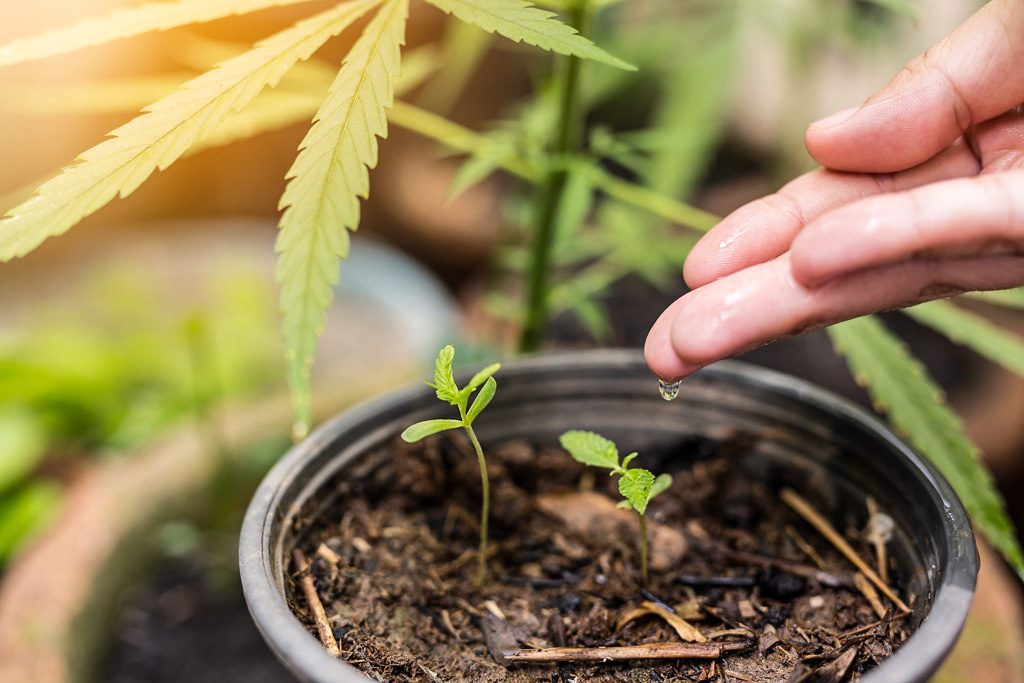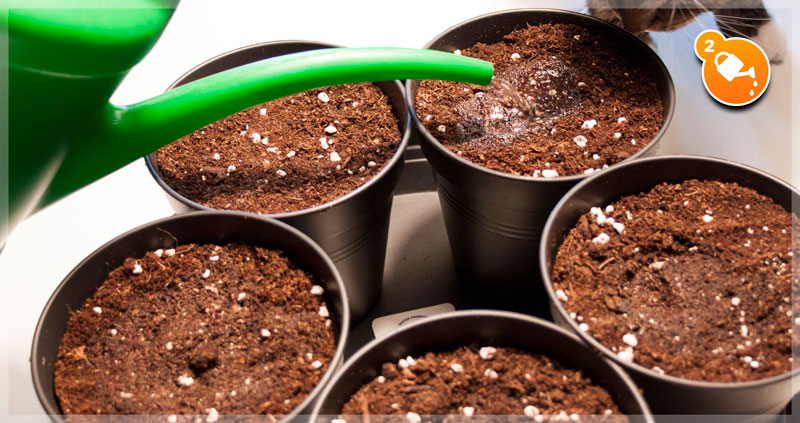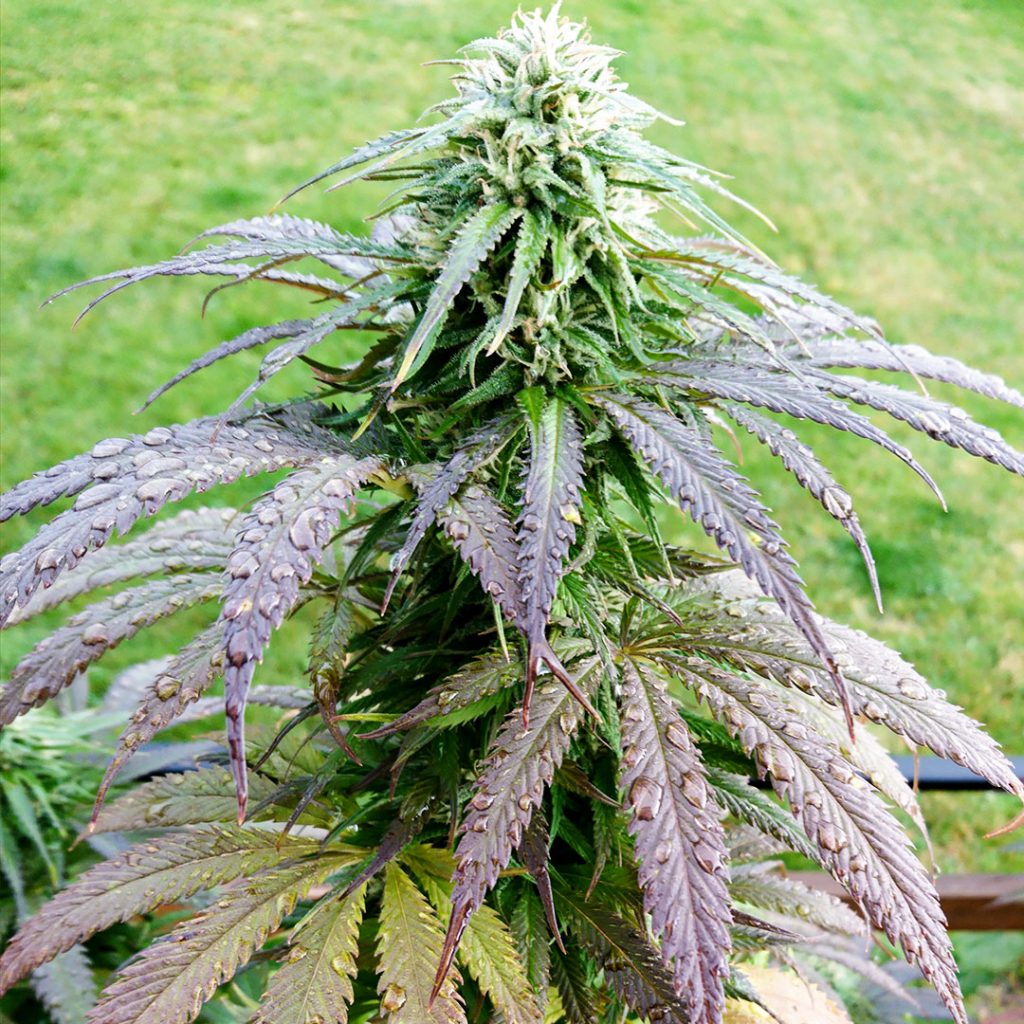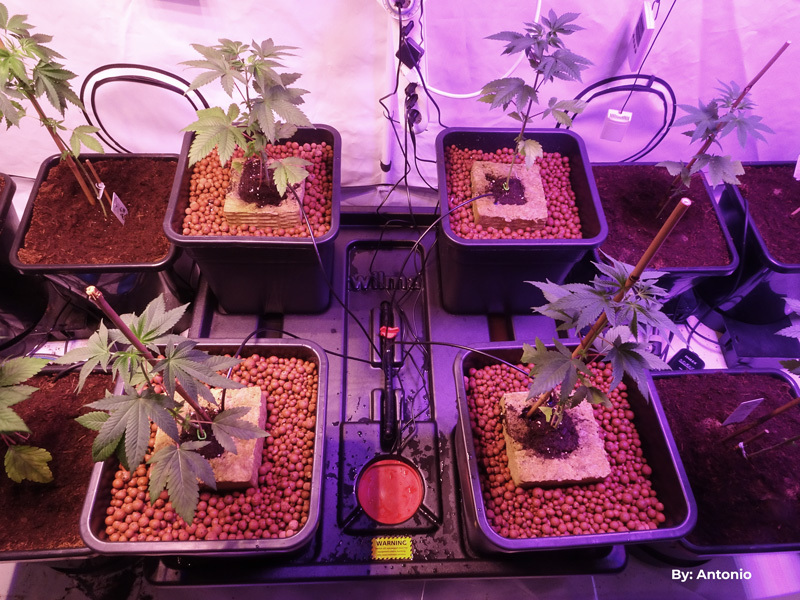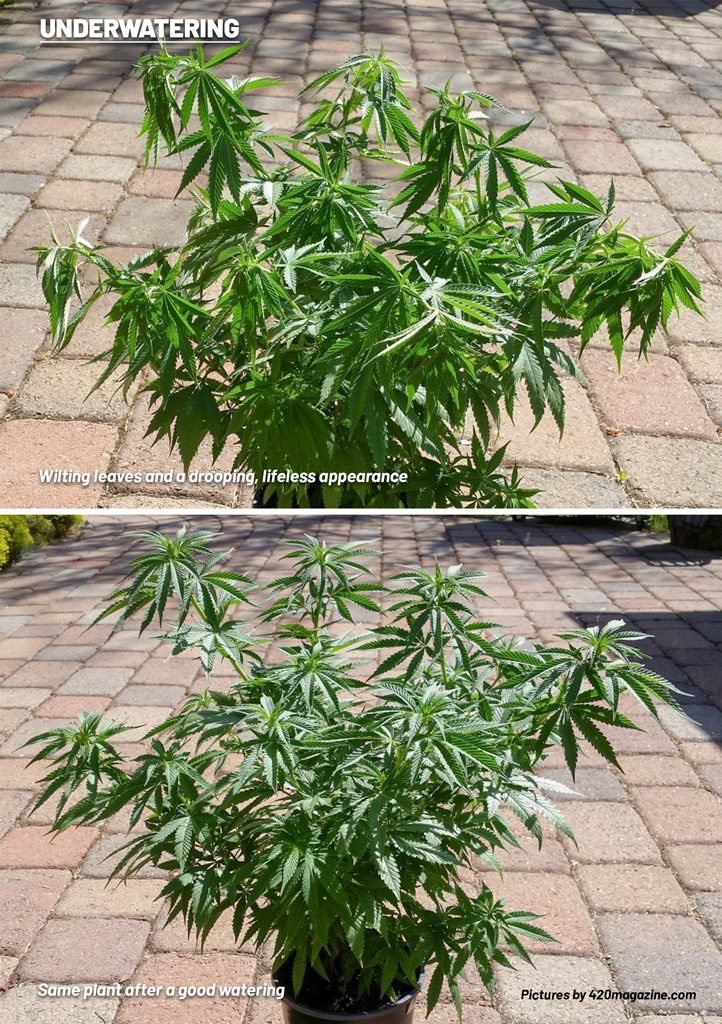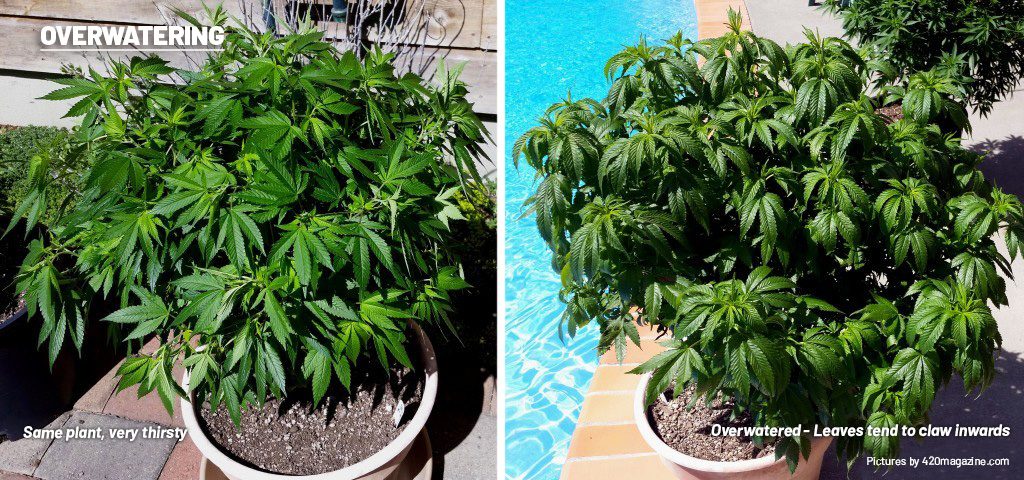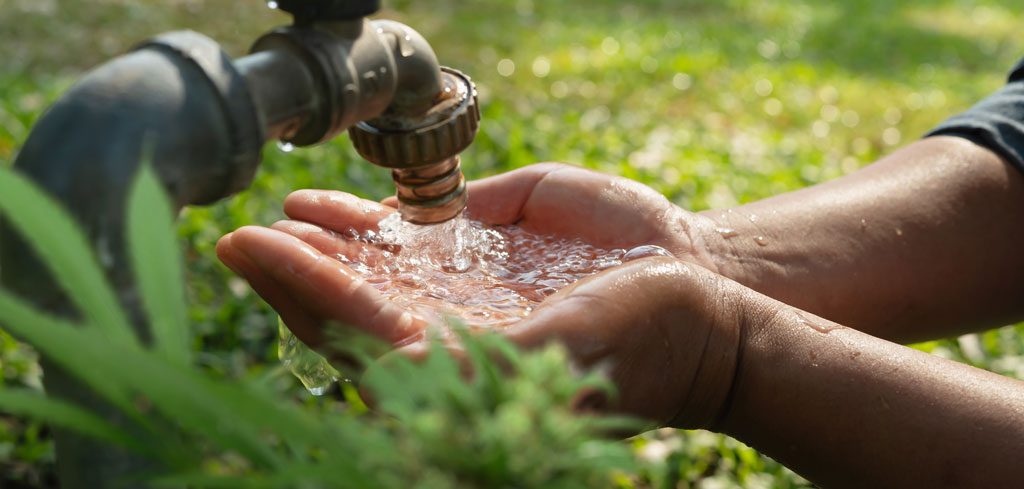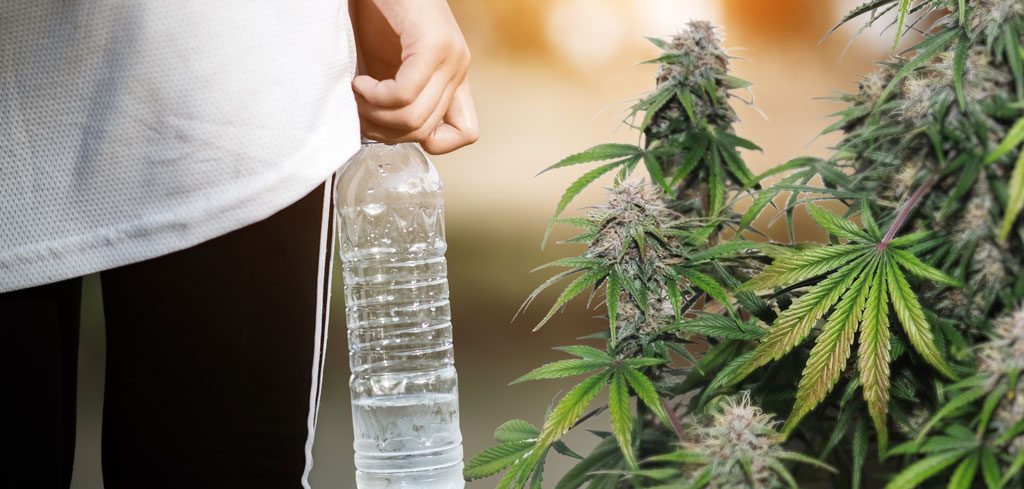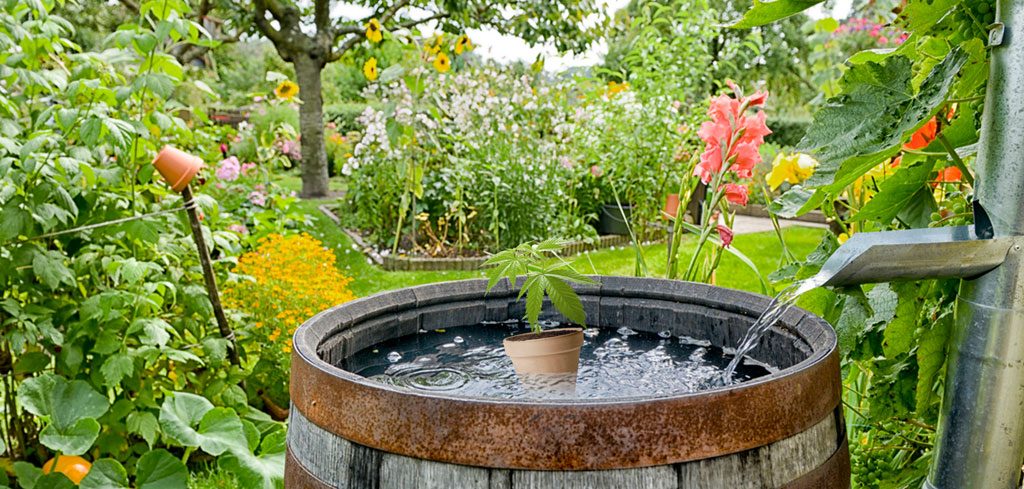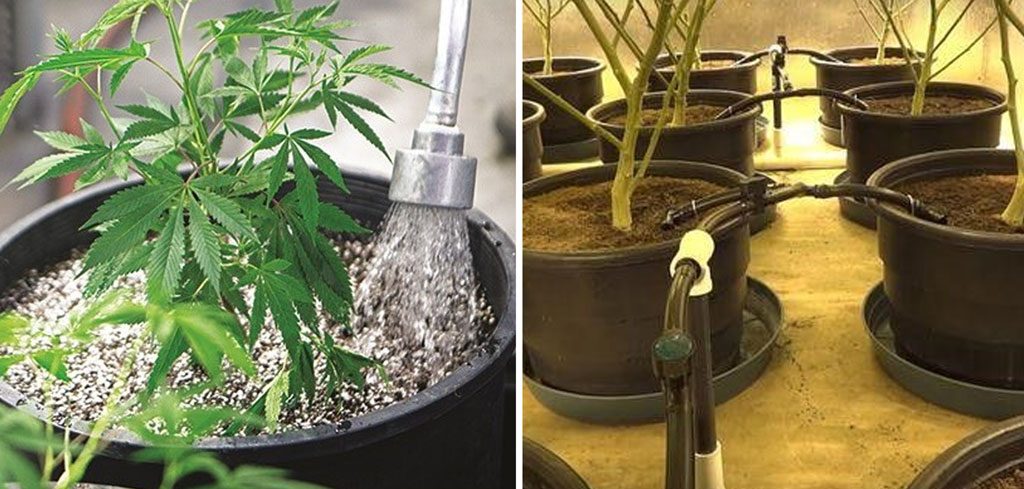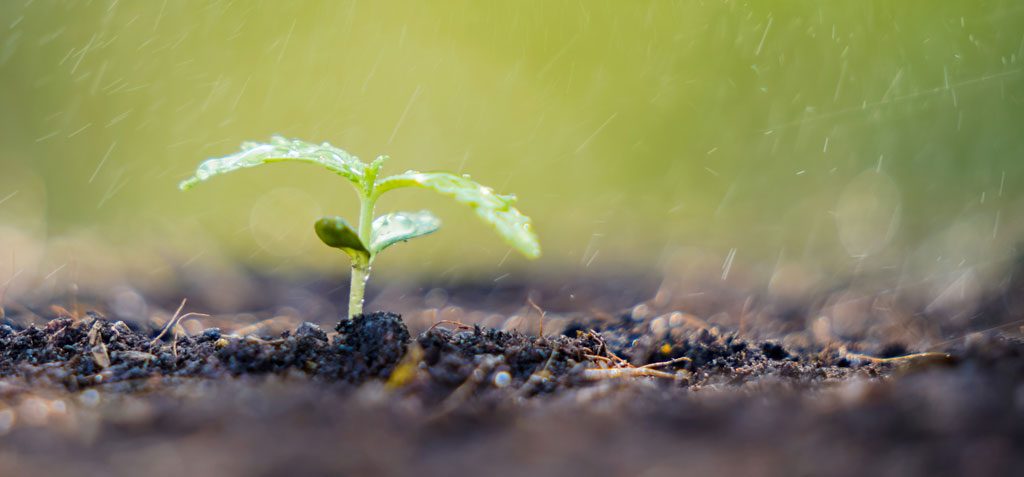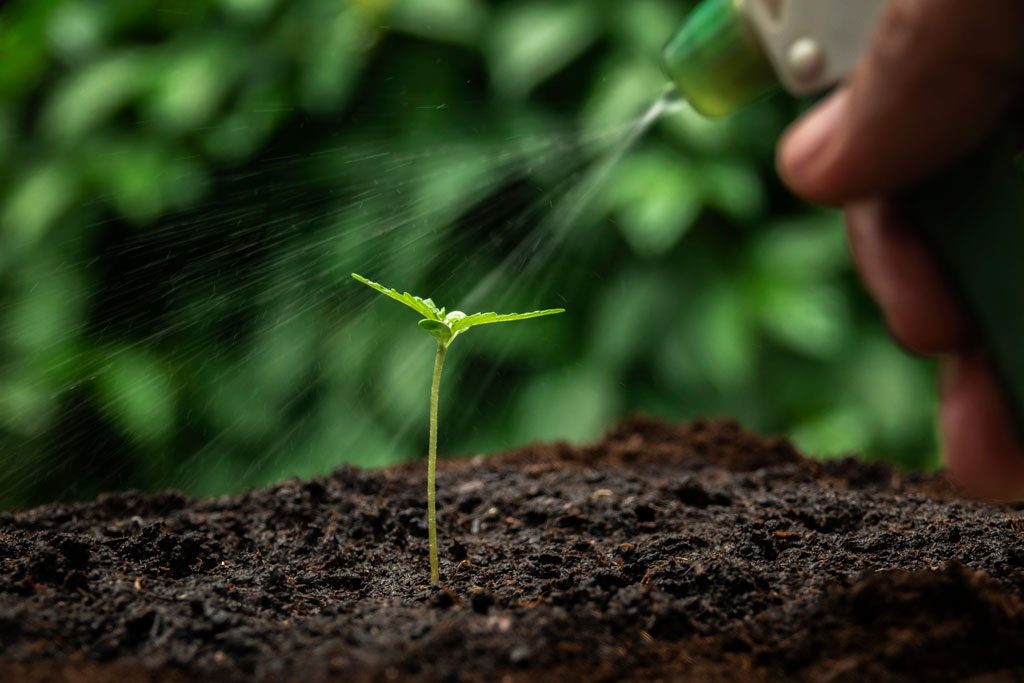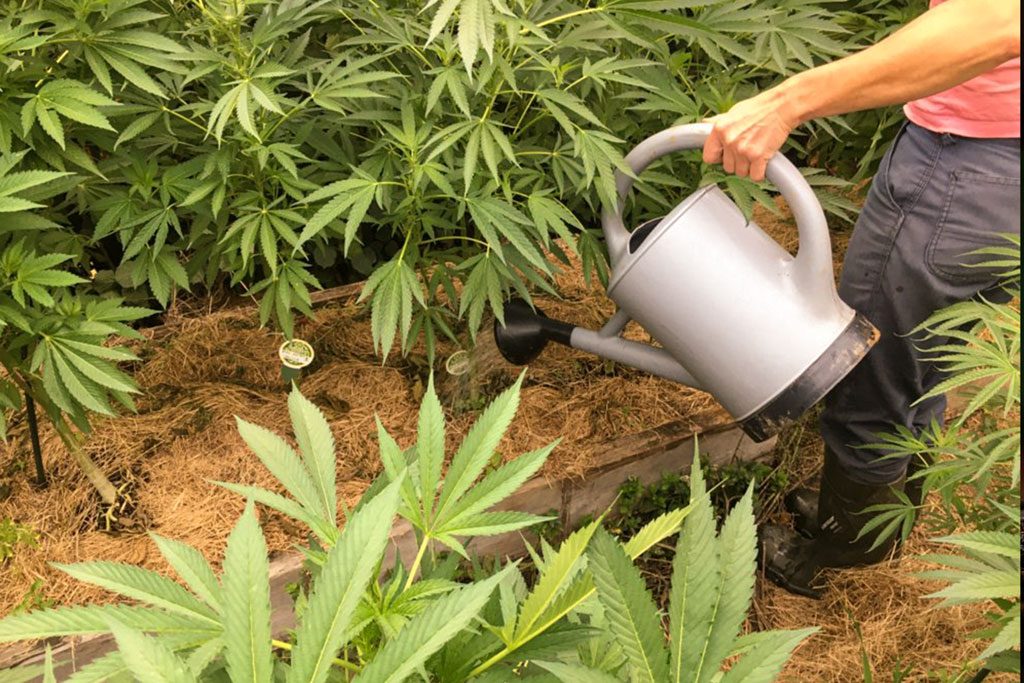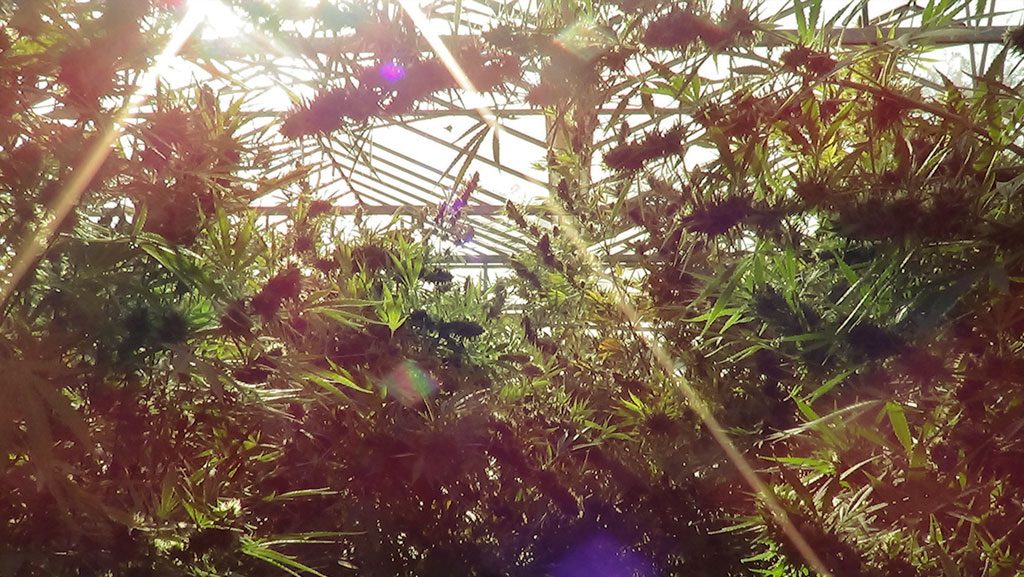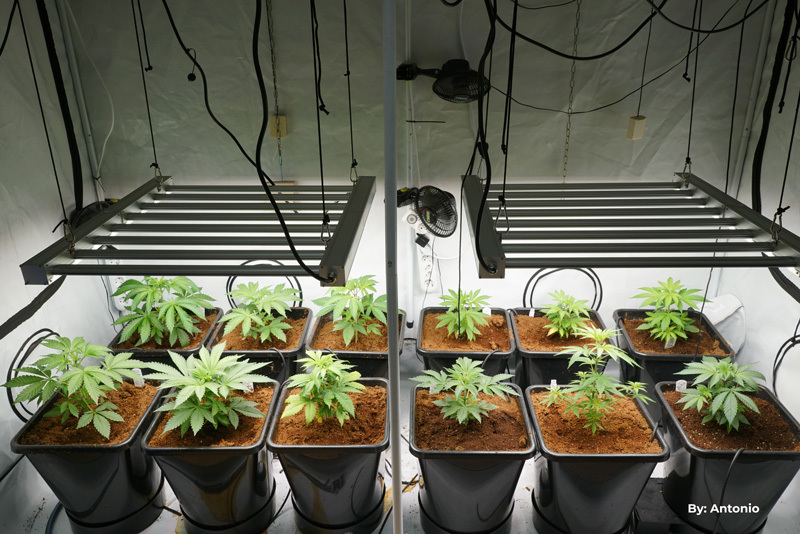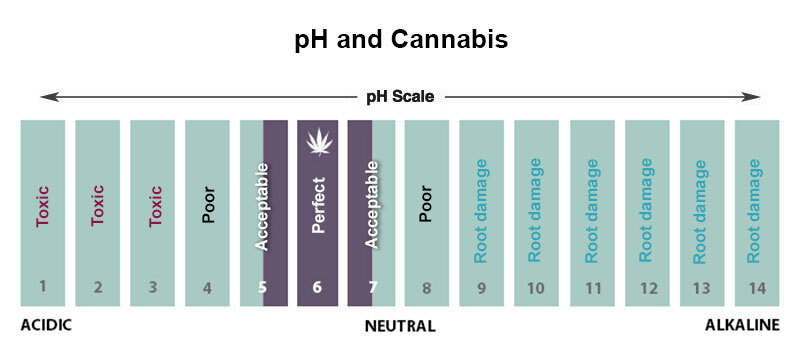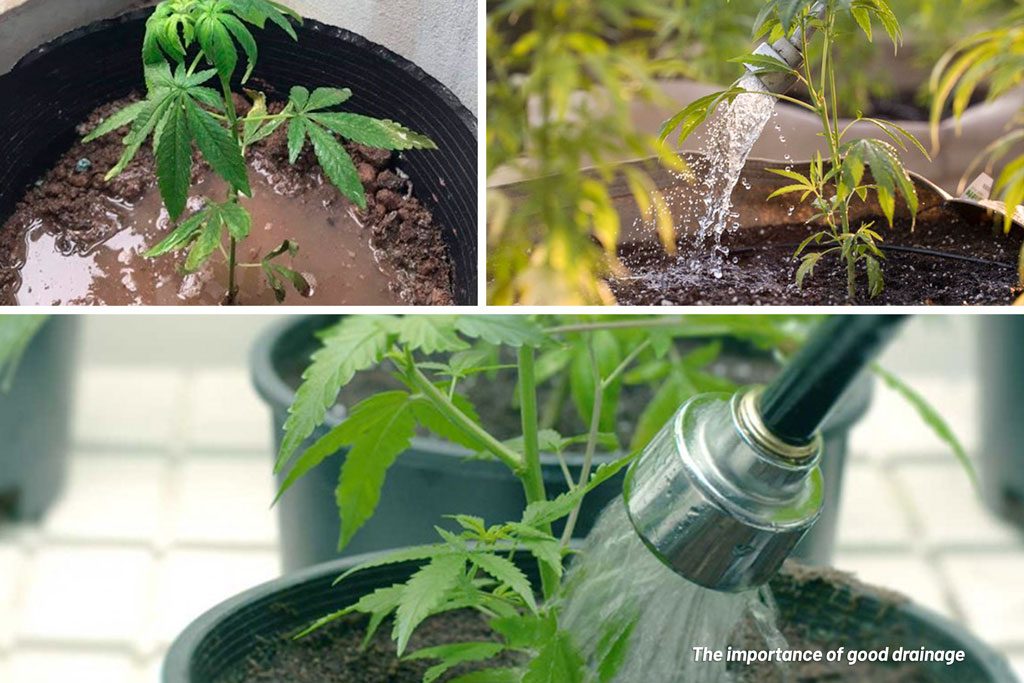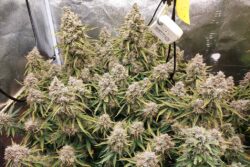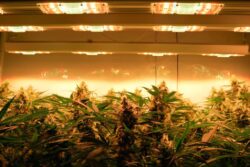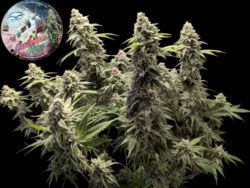Watering cannabis ought to sound like it’s one of the simplest things to get right in your grow room. However, after several decades specialising in cannabis seeds, Dutch Passion have found that over-watering (and over-feeding) cannabis plants is one of the most frequent problems seen in the grow room especially by less experienced growers. In simple terms cannabis roots will not grow well in waterlogged soil conditions due to lack of oxygen.
If the cannabis roots can’t grow healthily then nor can the rest of the plant. Everything from mineral/nutrient uptake to respiration is affected and in the worst cases growth can stop and plant damage can be terminal. The flawed, but perhaps partially understandable logic from the less experienced cannabis grower is that more water/nutrients will result in larger cannabis plants.
In fact the largest, healthiest cannabis plants can only reach their full genetic potential/potency if they are neither overwatered nor over-fed. This is equally true whether growing autoflowering cannabis seeds or feminised seeds, the same principles apply. Read on for some expert tips and advice on how to water your cannabis plants and avoid the pitfalls of under-watering and over-watering your cannabis plants.

